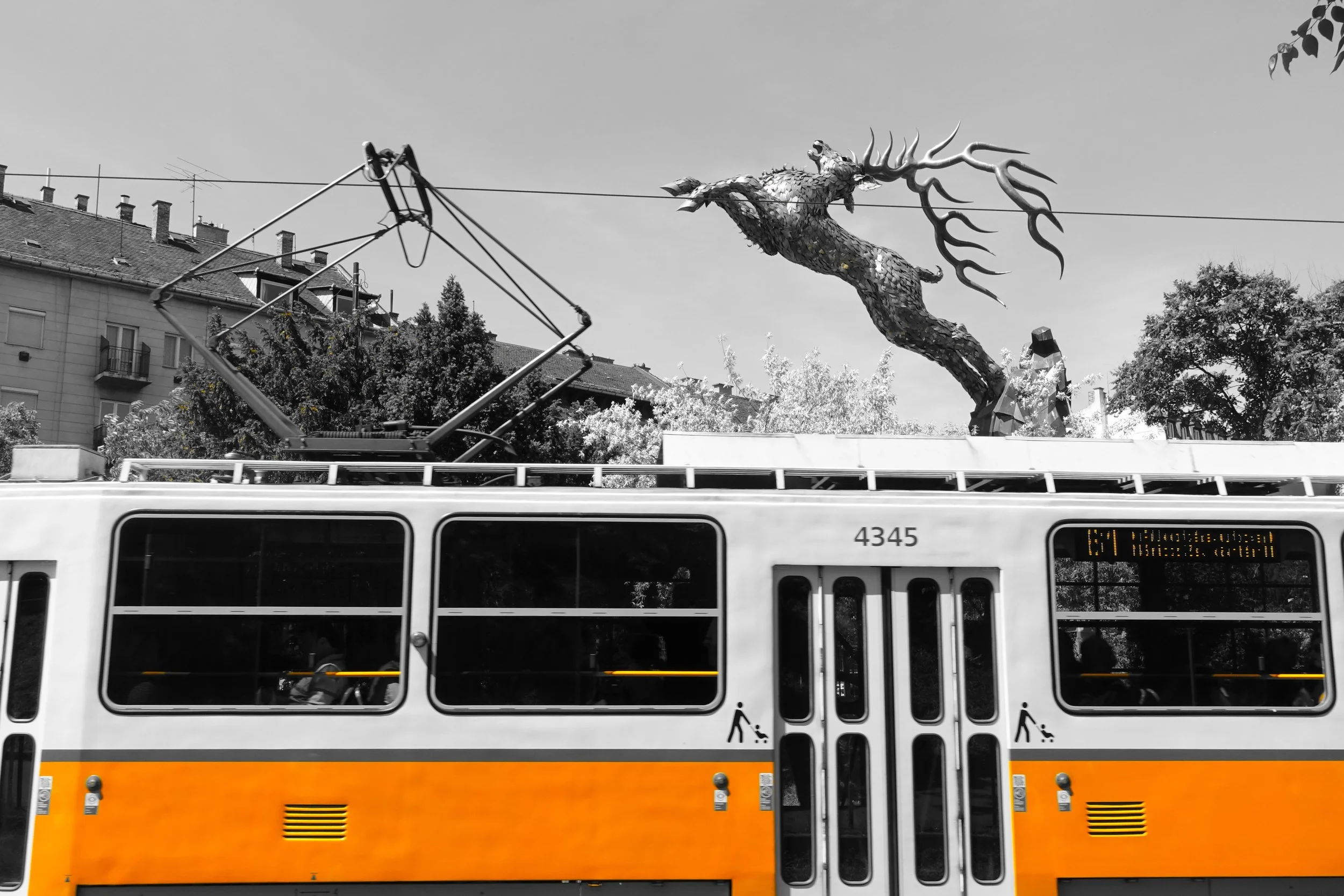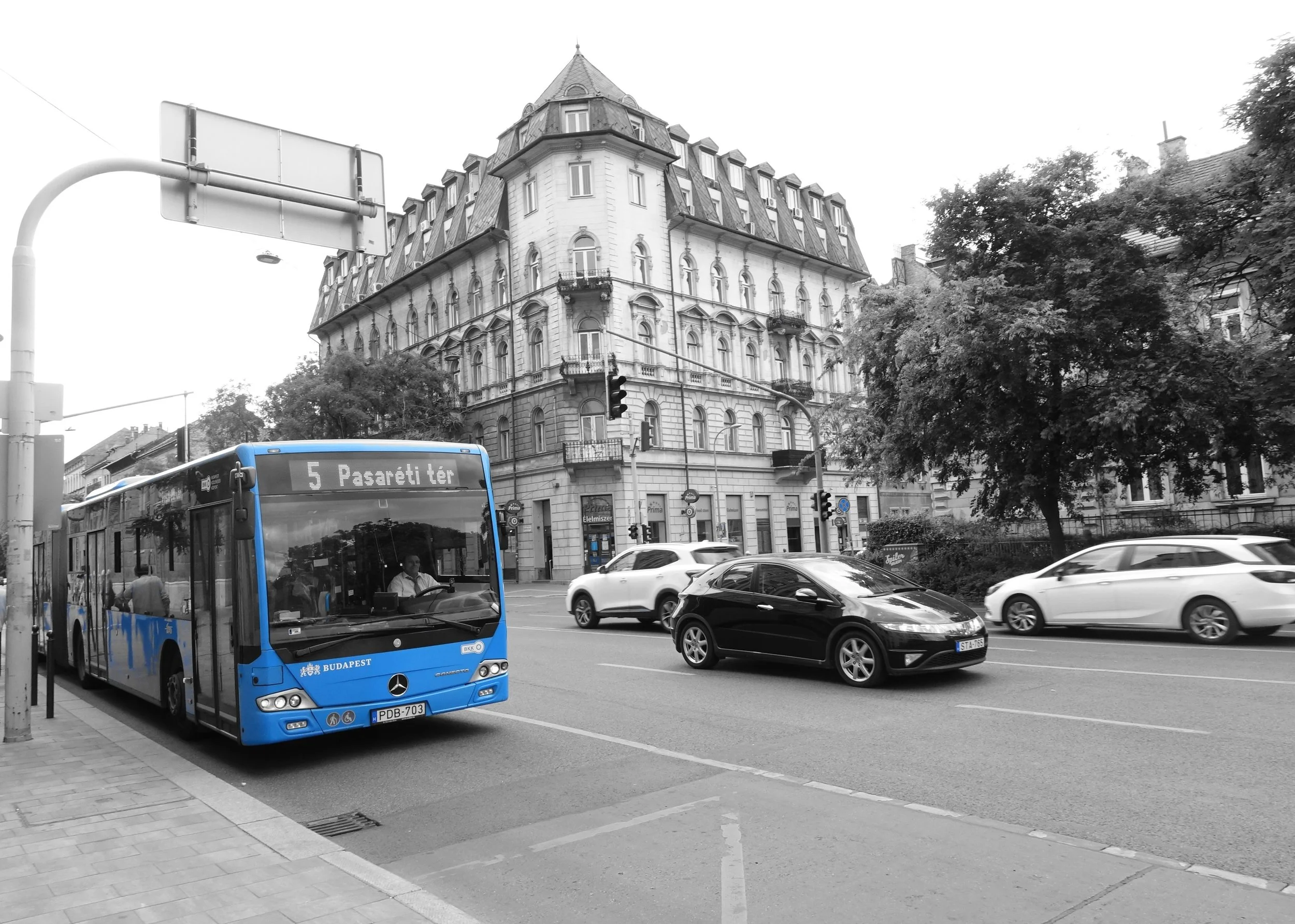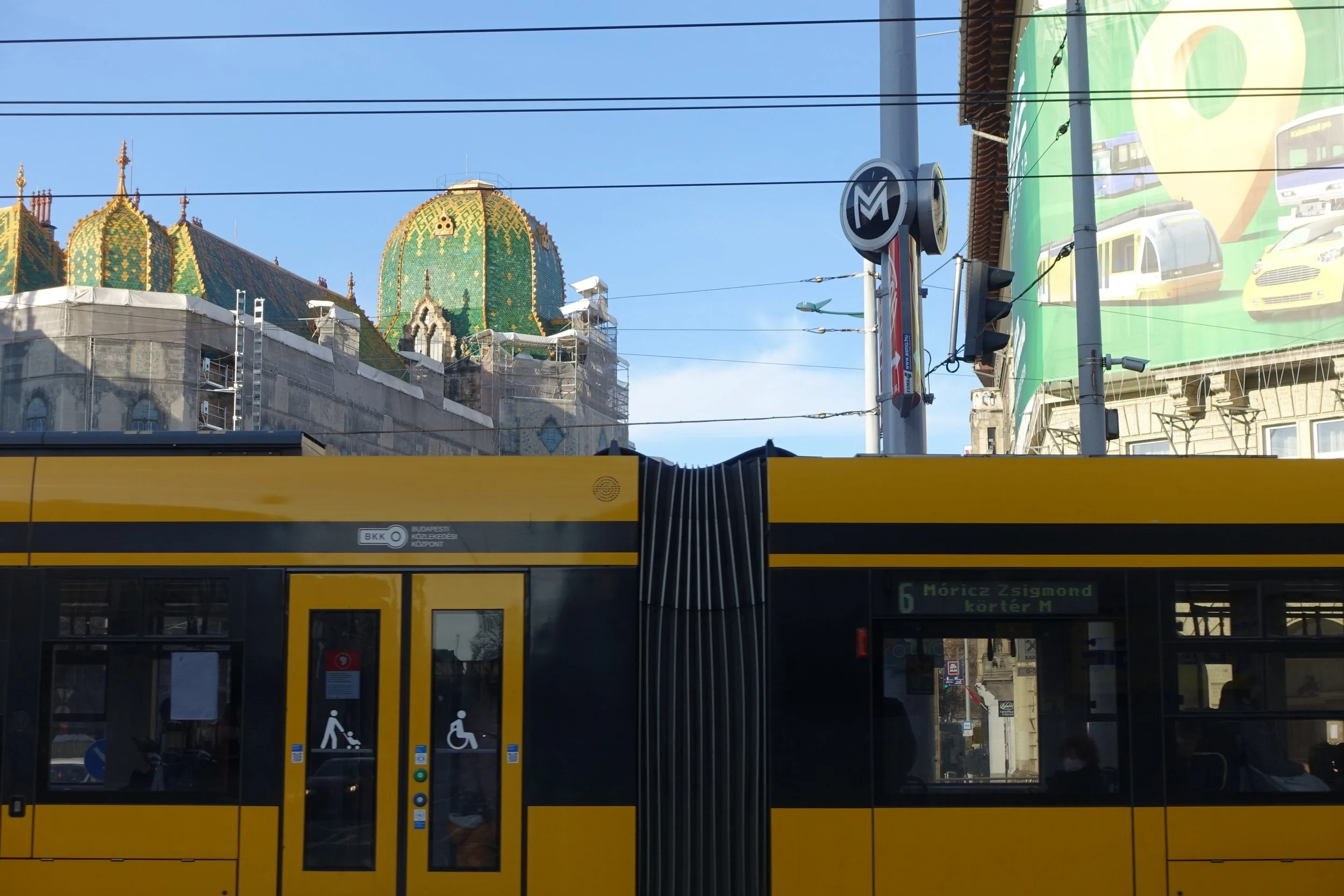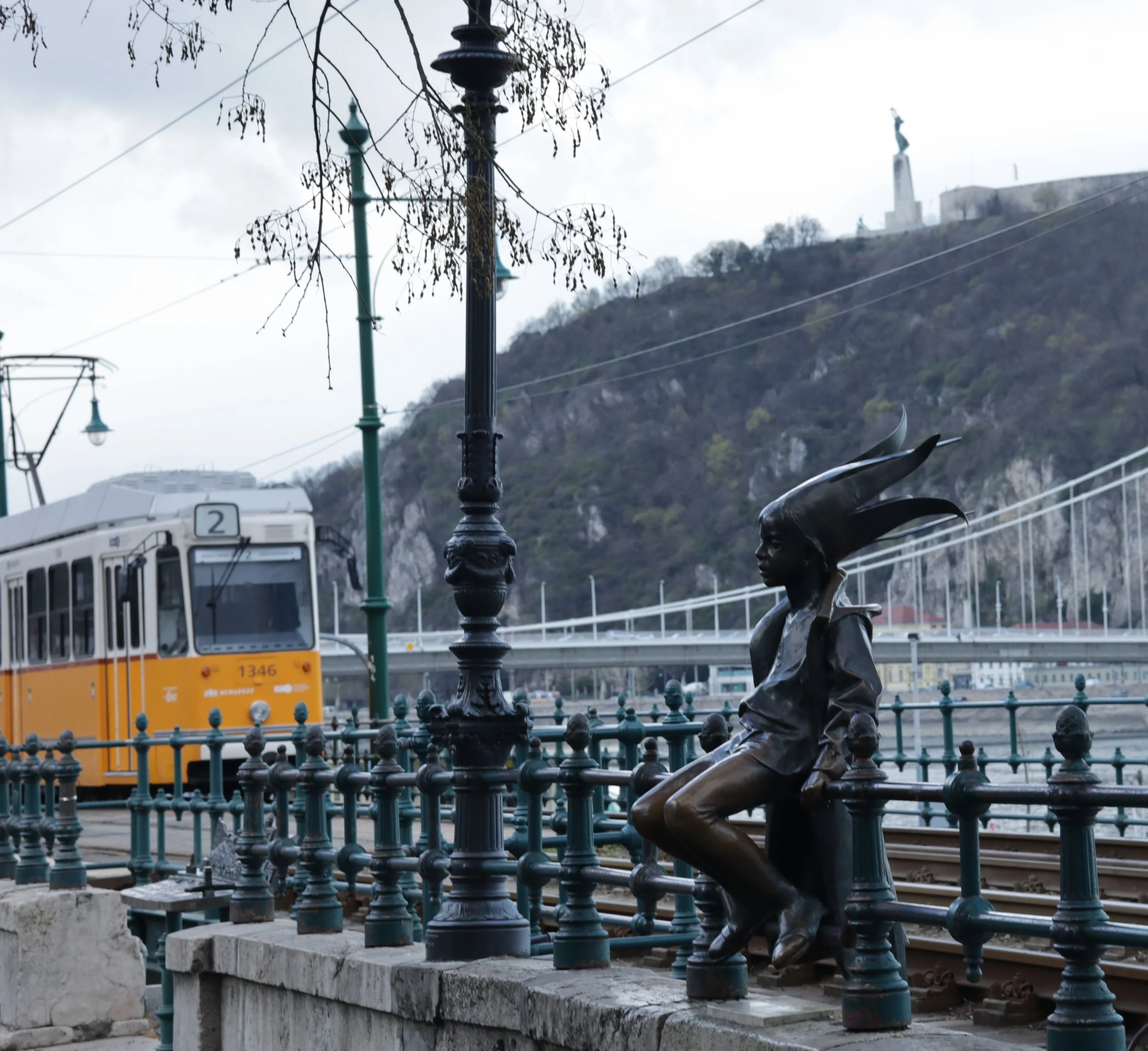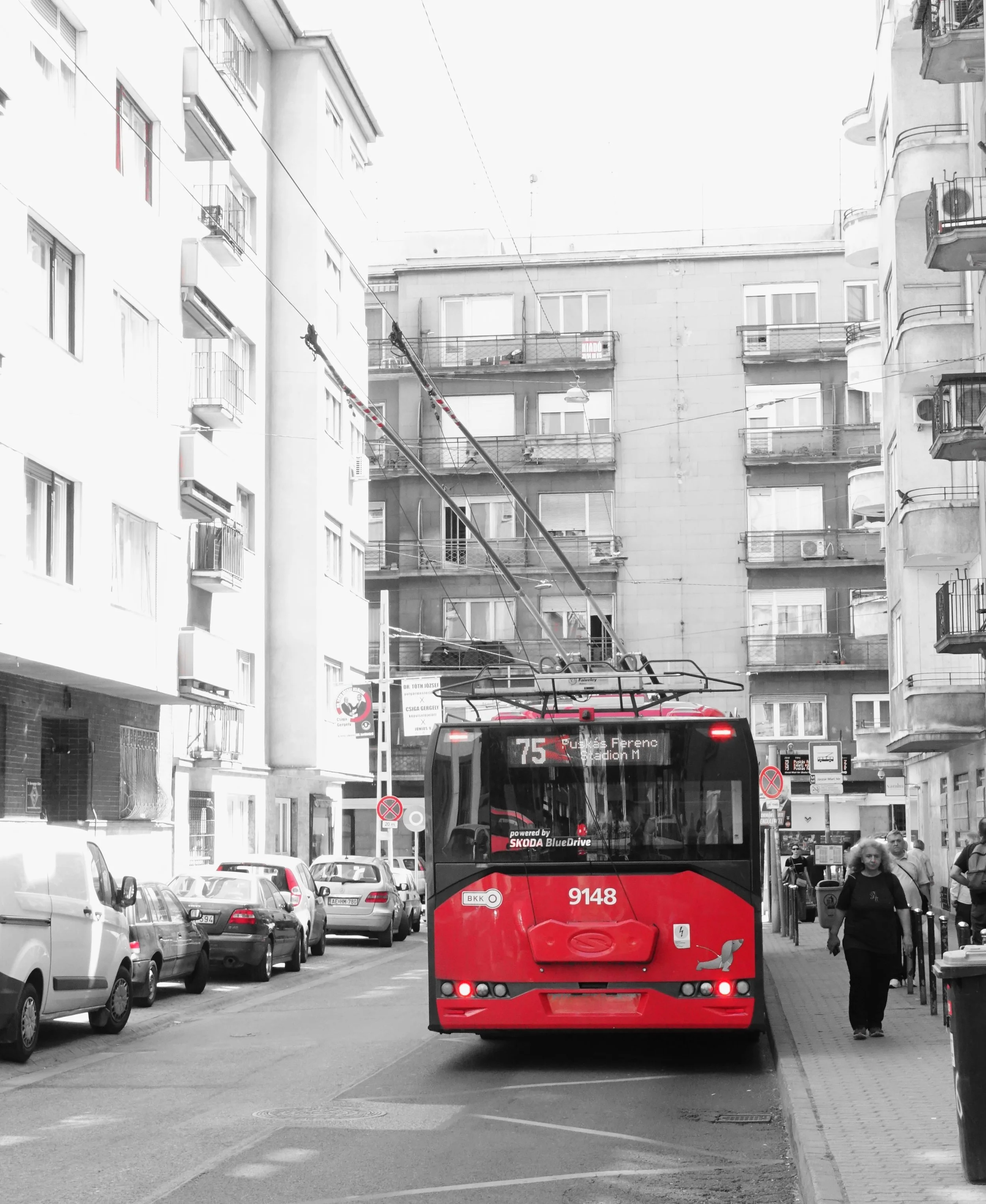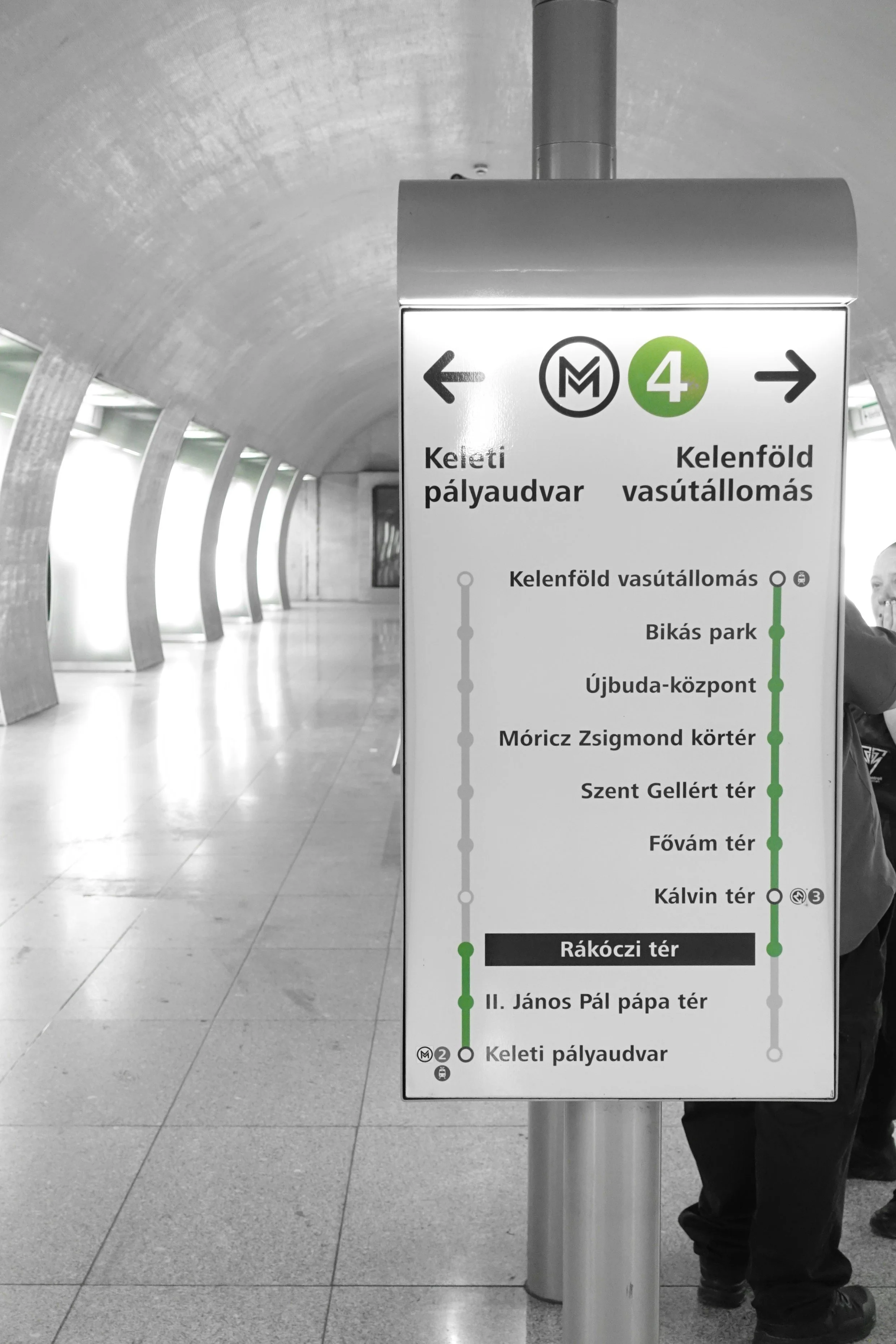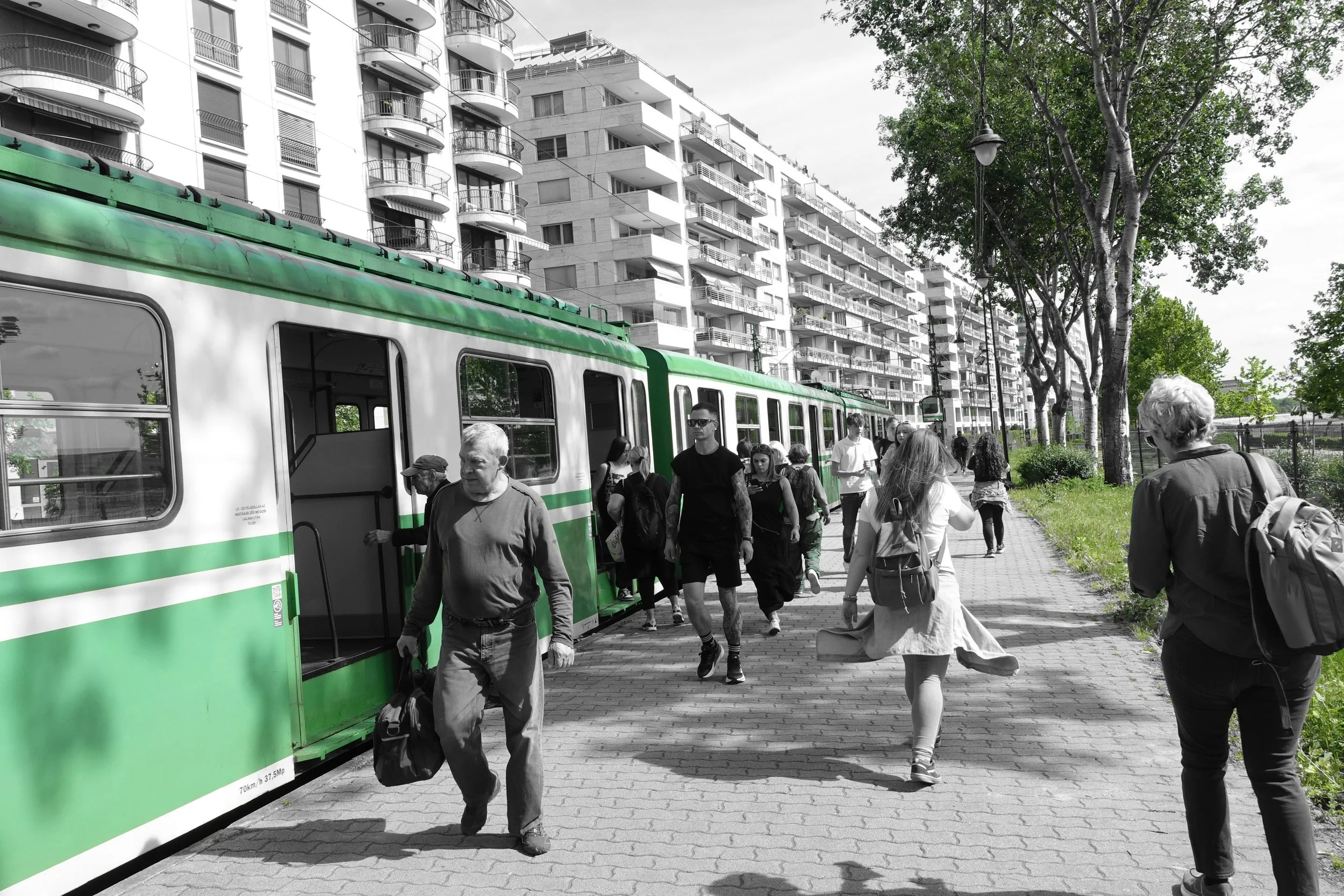Restless journeys in the small hours
Insomniac in Ferencváros
An unfortunate mixture of hay fever and heartburn has removed any possibility of sleep. The solitude of my insomnia is relieved by the first bus of the day. It’s still dark as that lonely vehicle wakes the birds with a burst of acceleration. From its haste, I can tell that there are no passengers to collect from our nearest stop, nor would I imagine many waiting elsewhere. I guess the driver wants to grab a smoke or coffee at the terminus, before the public begin to board in earnest.
In the silence before cars from the suburbs arrive, the first Tatra trams screech through the valley. Numbers 56, 59 and 61 are bringing commuters along the route of the devil’s ditch stream into the city. I wonder if they have woken the wild boar who live near the terminus in the cool valley of Hűvösvölgy. Later, the high-pitched whine of trams will be absorbed by the general hum of traffic but now they complain at the long day of toil ahead. My body finds it easy to empathise with them.
Tatra T5C5 trams look cool but are really antiquated. You need to climb up three steps to board, so it’s tough for prams and impossible for wheel chairs to gain access. There’s no air conditioning in summer with just the faintest suggestion of warmth in winter and not enough space for two adult passengers to sit opposite one another. Although the Tatra models are gradually being replaced, they remain the work horses of the tram fleet; a 320 strong pack of yellow sided creatures constantly breaking stride for pesky passengers to clamber on; whinnying at every corner and whimpering when forced to slow down.
The number 59 climbs into the Buda Hills to the Farkasréti cemetery where many of Hungary’s most famous writers and artists are buried. This shiny steel creature seems to relish the challenge of the ascent but screeches in pain on the bends as it returns to level ground near the southern railway terminal. It’s hardly surprising the Tatra vehicles sound so tired as the Budapest tram network is the busiest in the world. I’ve got my own ailments to complain about. The T5C5’s are not the only relics awake at this hour!
61 tram at Krisztina körút
As dawn breaks, I hear the real racehorse of the district- the blue number 5 bus- galloping alongside the Városmajor park. The on-board recorded message tells passengers to hold on tight and its good advice. Shaky pensioners, parents with buggies or tourists with rucksacks- watch out! No sooner has the last passenger boarded, than the vehicle zooms off at top speed. Roaring through the potholes is a given on all major bus routes and the 5 seems to particularly enjoy it. Customer service and comfort are added extras which local passengers don’t miss because they’ve never experienced them. The drivers are inevitably impatient, immune to complaint or compliment alike. if a bus arrives ahead of schedule, nine times out of ten it will leave early too. Timetabling becomes a lottery but there are ample buses speeding through the day and evening to get you where you need to be.
West bound number 5 bus
Rather than taking a rampaging number 5 bus across to Pest, I could abandon my pillow and take a local one to Széll Kálmán tér before jumping on a number 4 or 6 tram. These Siemens Combino models share tracks for almost the entirety of a nearly circular route. The morning commute starts early and even at dawn it would probably be a crowded journey. Over proximity to fellow passengers aside, this is an excellent service. The seats are comfortable on these modern trams if you are taking a long ride, and considerable standing room is available if only going a stop or two. And they offer reasonable wheelchair and disability access. Running twenty-four hours a day, the 4 and 6 trams are often packed but connect many useful and important points in the city centre. Iconic symbols of Budapest travel, they even have bars named after them.
Number 6 tram at Corvin Negyed
An early departure from the 4/6 route at Jaszai Mari ter offers different options. One is to join the number 2 Tatra T5C5 tram that follows the course of the Danube south. The number 2 route was described as offering Europe’s second most beautiful tram ride. if you were to holiday in Budapest, it comes highly recommended. I used to travel its entire length early on Tuesday and Thursday mornings to teach English lessons at an American owned company in the thirteenth district. I didn’t always appreciate the beauty of the sights when crammed in with other bleary-eyed workers. Later in the day the carriages are chock-a-block with tourists and it’s probably at its best after dark, when the Parliament and other grand buildings become magical under artificial light.
Number 2 tram travelling along the Danube
The alternative is to walk around the northern corner at Jaszai Mari ter and catch one of the city’s electric trolly buses. They began in their present form in 1949, when the numbering started at 70 to celebrate Joseph Stalin’s recent birthday. Before the Covid epidemic I used to take the 75 route to reach a teaching assignment on one of the most battered vehicles imaginable. The doors opened and closed with great reluctance, stuttering into position and frequently jamming. It was either one of the ZIU-9 models constructed in Russia or an early Ikarus. Either way, the seats were cramped and the bus too small for passenger demand. Those bone rattling journeys put me off using trolly buses but they cover many of the inner suburbs and reach places other forms of transport ignore.
I recently caught the number 75 running from Jaszai Mari ter to the Puskás Ferenc Stadion and it was a radically improved experience. The electric Solaris vehicle was spacious and ensured my smooth arrival at the national football stadium. The bendy bus construction of the Solaris allows for twice as many passengers as older models. Compared to the diesel pumping blue buses I described earlier, they run comfortably over less than perfect tarmac; and on those rare occasions when there is sufficient distance between stops, can even pick up some speed. If the old Ikarus trolleys symbolised communism, then the Solaris feels like Budapest has made home on a different planet. Still numbered 70 to 84, the spirit of Stalin might marvel at the comfort, modern day citizens enjoy. Or he might frown from his ghostly ZIS-115 armoured limousine, at the bourgeois decadence that his predecessors failed to prevent in central Europe.
75 trolly bus waiting at Jaszai Mari ter
Another symbol of capitalism for the twenty-first century is Metro line 4. Built after the days of communism ended, each spacious station is styled slightly differently and compared with vehicles on earlier lines, the blue and red chequered seats are actually comfortable. There are only ten stops on the green line and the money ran out before an extension to the science park and university quarter of southern Buda could be added. Metro line 4 has connected unfashionable Józsefváros with the lively centre of Pest and runs from the eastern railway terminal through to one of the busiest overland junctions in Buda. The carriages are quiet, clean and often uncrowded. Regulars on any London Underground service would appreciate the difference.
Rákóczi tér metro station on line 4
Considering the excellence of alternative modes of transport, some locals argue that Budapest doesn’t need costly, below ground services at all. But there is a proud history here. Opening in 1896, Line 1 is the second oldest underground service in the world after the City and South London Railway. It still retains a heritage feel with its tiny carriages carrying people from the centre to the City Park and beyond. And it’s well worth taking a ride just below Budapest’s grandest boulevard if you don’t have time to stroll along Andrássy út and admire its many interesting buildings.
Line 3 was initially built by engineers and money from the Soviet Union in 1976 and its recent refurbishment completed under an old contract with the Russian Federation. One of the reasons suggested for the lengthy delay in completing this project, was that parts originally scheduled for the refurbishment ended up being sent to the war effort in Ukraine. Whatever the reason, it took about four years to complete a job that should have been done in half the time. Not that I missed those hurtling, overcrowded carriages reeking of engine oil. Line 3 runs from the far northern suburbs to those in the south and is the heaviest used of the four Metro services. It’s still overcrowded but probably the only subterranean line that could be considered essential.
You can use all forms of local public transport in Budapest for 8,950 forints a month-about £20. This also includes the loud and uncomfortable suburban railways for most of their length, a limited boat service on the Danube and the Cogwheel railway in Buda. The latter offers a romantic if noisy escape into the hills. The price of the monthly pass has actually come down in this year of municipal elections and public transport is heavily subsidised by the state. While some argue that the money would be better spent on social care or raising the wages of nurses and teachers, at least cheap transport is available to everyone. It keeps the city moving and if the funds were available, I could imagine Budapest going the way of other European cities in making transportation free to everyone at all times.
HEV-suburban railway station at Boráros tér
As I write it has finally become morning. A beautiful spring day has emerged from my endless night. The background hum of cars and commercial vehicles has overpowered the sound of public transport. While traffic jams of the like seen in western Europe are rare here, there should still be more car-free areas developed. If private vehicles could be removed from the heart of Budapest, then it would be an even better place to live and work. We could all travel on public transport or use the comprehensive network of routes serving electric scooters and the council’s wonderfully named Bubi bikes. But the Hungarians love their cars as much as everyone else. Local politicians suggesting this move would face their future peril at the ballot box. It’s just a hopeless dream for an occasional insomniac. After all this thought of travel, I feel quite exhausted. Maybe I’ll be able to snatch forty winks before breakfast.
Bubi bike terminal (Budapest Bike)

